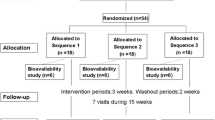Abstract.
Olive oil is a functional food, which in addition to having a high level of monounsaturated fatty acids (MUFA), also contains multiple minor components, among them several phenolic compounds. Oleuropeine and its glycoside are the main sources of a simple phenol hydroxytyrosol with a strong antioxidant activity. Hydroxytyrosol is well absorbed in the gastrointestinal tract but its bioavailability is poor because an important first past metabolism both in gut and liver, leading to the formation of sulphate and glucuronide conjugates, to the extent that concentrations in body fluids of its free form are almost undetectable. This is a major drawback in our understanding of the antioxidant activity of this compound in vivo and the potential health benefits derived from its consumption. The picture is further compounded by the fact that hydroxytyrosol is also a dopamine metabolite and body fluids concentrations combine exogenous and endogenous sources.
Similar content being viewed by others
Author information
Authors and Affiliations
Corresponding author
Additional information
Received 23 May 2008; accepted 19 June 2008
Rights and permissions
About this article
Cite this article
de la Torre, R. Bioavailability of olive oil phenolic compounds in humans. Inflammopharmacol 16, 245–247 (2008). https://doi.org/10.1007/s10787-008-8029-4
Published:
Issue Date:
DOI: https://doi.org/10.1007/s10787-008-8029-4




